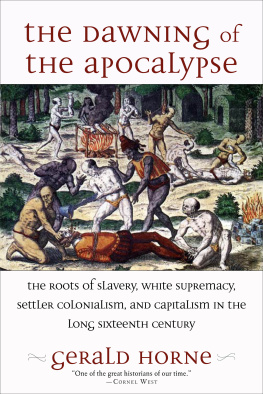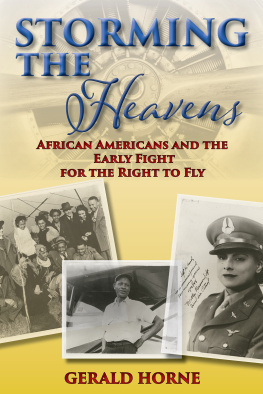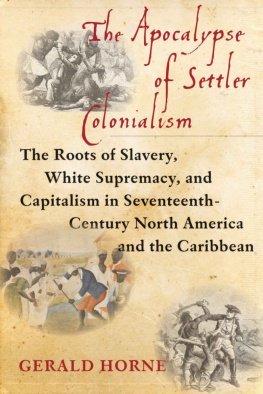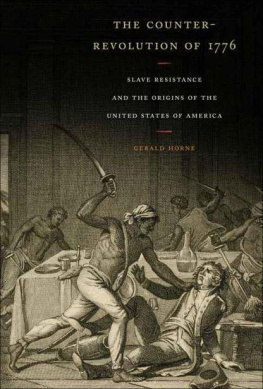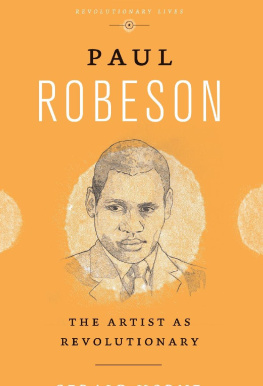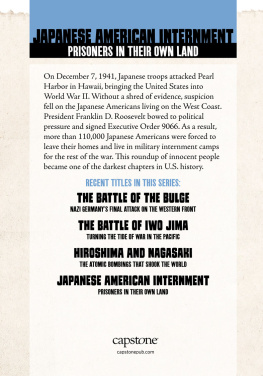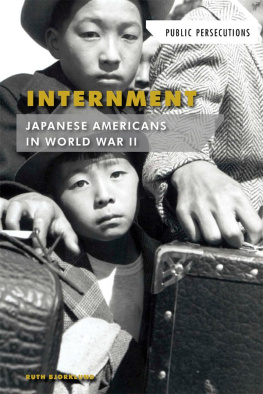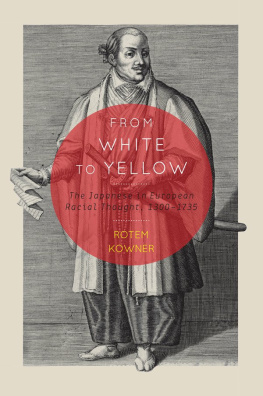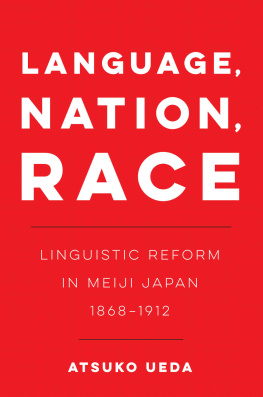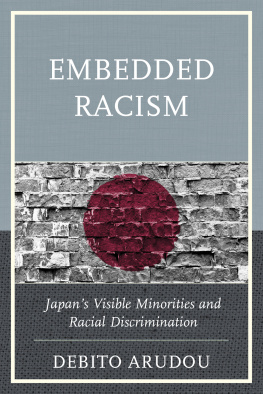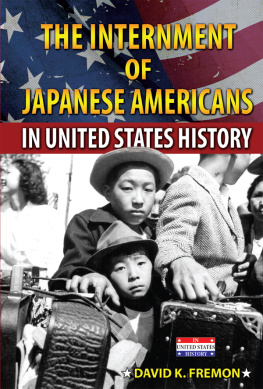Thank you for buying this ebook, published by NYU Press.
Sign up for our e-newsletters to receive information about forthcoming books, special discounts, and more!
Sign Up!
About NYU Press
A publisher of original scholarship since its founding in 1916, New York University Press Produces more than 100 new books each year, with a backlist of 3,000 titles in print. Working across the humanities and social sciences, NYU Press has award-winning lists in sociology, law, cultural and American studies, religion, American history, anthropology, politics, criminology, media and communication, literary studies, and psychology.
RACE WAR

Map of Asia, circa 1931.
RACE WAR
White Supremacy and the Japanese Attack on the British Empire
GERALD HORNE

NEW YORK UNIVERSITY PRESS
New York and London
www.nyupress.org
2004 by New York University
All rights reserved
Library of Congress Cataloging-in-Publication Data
Race war : White supremacy and the Japanese attack
on the British Empire / Gerald Horne.
p. cm.
Includes bibliographical references and index.
ISBN 0814736408 (cloth : alk. paper)
1. World War, 19391945Pacific Area. 2. World War, 19391945Asia.
3. World War, 19391945Japan. 4. Caucasian raceSocial conditions.
5. RacismJapan. 6. RacismAsia. 7. RacismPacific Area.
8. AsiaRace relations. 9. Pacific AreaRace relations.
10. JapanRace relations. I. Title.
D767.H595 2003
940.53089009171241dc22 2003016114
New York University Press books are printed on acid-free paper,
and their binding materials are chosen for strength and durability.
Manufactured in the United States of America
10 9 8 7 6 5 4 3 2 1
Contents
Preface
As the Great Depression was unfolding, Robert Abbott, the wealthy African American publisher, sailed eastward to England with his spouse. The experience proved to be a racial nightmare. Upon arriving in Londonheadquarters of the powerful British Empirehe was refused a room in the prestigious Savoy in the West End, though he arrived with reservation in hand. Why? He was informed curtly that the hotel did not cater to Negroes. He left in disgust and went to several other hotels where he dispatched his fairer-skinned wife to register but in each case when he sought to enter he was blocked at the desk and asked to leave. All told, thirty hotels engaged in this odious practice.
Shortly thereafter, the noted African American jazz musician, Buck Clayton, was on board a ship, sailing in a different directionactually and metaphoricallywestward to Asia. He suffered, was dismally seasick, and really wanted to dienot because of incommodious treatment but because the choppy waves rocked his vessel. Yet his maritime ailments were quickly forgotten when they landed in Japan: We were the only ones allowed to disembark. All the white passengers had to remain aboard while the ship was in dock while we Blacks were allowed to go ashore and have a ball. We could come and go as we pleased, he concluded, still wondrous at this reversal of Jim Crow.
Neither Abbotts experience in London nor that of Clayton in Kobe was unusual for the time. In the former, all those not of pure European descent were treated like so much chattel within the Empire and in a good deal of North America. Effectively, this was the treatment meted out to the overwhelming majority of the planets inhabitantseffectively providing an enormous opportunity for the Japanese, who were treated similarly, to flip the script and challenge the Empire and its U.S. cousin on the basis of race. This reverse discrimination was Tokyos way of appealing to Negroes, not to mention Asians, neutralizing them or even converting them into a fifth column in case of war with Washington and London. This tactic was not altogether unsuccessful.
This is a book about race and racism within the British Empire in Asia. The focus is on Hong Kong, though the narrative ranges from Fiji and New Zealand to India. The narrative is told from both a top down perspective, for example, the viewpoints of Europeans in British Asia in the pre- and postwar eras and a bottom-up perspective, that is, the viewpoints of destitute and interned Europeans, along with those of U.S. Negroes and some Africans and Asians.
The chronology veers from the period leading up to the Pacific War, to the war itself and the immediate postwar era. The thesis is simple: an all-encompassing British racismamply bolstered by other European powers and particularly by the United Statesdemobilized the colonized, making them highly susceptible to Japanese racial appeals. This was a major factor contributing to Tokyos early success in the war. Europeans and Euro-Americans interned by the Japanese authorities during the war received a harsh and sobering taste of racial subordination; and, after the war concluded, a Chinese bourgeoisie was given a boost as a result of the looting, fleecing, and fleeing of many British, not to mention the profitable collaboration of some Asians with Tokyo.
The subtextbut not the principal focusof this book is the brutality unleashed by Japanese forces, particularly in China. Initially at least, many of those subjected to European colonialism and imperialism welcomed the invaders as liberators from a private hell. However, as the war ground on, it became apparent that this fond wish was far from the truth.
I should make clear early on that if I had been living during the era of the Pacific War, I would have fought against Japanthough I would have been subjected to discriminatory, racially segregated treatment in the U.S. military. Thus, readers should be alert to the fact that my indictment of Londonand Washingtonis not intended as an exculpation of Tokyo. Instead, I am seeking to show how Londons racial policies in particular actually enabled Tokyo. Likewise, I recognizeabove allthat there were salient factors beyond race that shaped the Pacific War, economics, geopolitics, and antifascism in the first place.
In other words, this book is not the latest chapter in the ongoing saga that has become so popular in North America and, to an extent, in
This approach has been exemplified by scholars in other contexts. The journalist and historian Roger Wilkins has wrestled with the idea that those apostles of freedom and liberty who founded the nation to which he swears fervent allegiance, were slaveholders. He could have added that the victorious North in the U.S. Civil War tolerated a virulent racial segregation, dispossession of Native Americansand worsebut that does not mean that they deserved to be defeated during this titanic conflict. In short, Japans claim to be the champion of the colored races was fraudulent in no minor way, though inevitably some who fought on her behalf actually believed the claimjust as some who fought for the United States during the Gulf War actually believed this war was fundamentally about human rights and not about oil. But although Tokyos claim was fraudulent the shock Tokyo administered to the ingrained system of white supremacywhich was an essential underpinning of the Empire and the United States alikewas central to the devolution of the doctrine of white supremacy. Despite this doctrine, however, the Allies did not merit defeat.
To the contrary. The withering experience of the war was critical in compelling a forced retreat from the dictates of white supremacy, as Washington and London most notably increasingly came to see racism as a threat to national security. Britain was compelled to deploy tens of thousands of Africans to fight Japanese troops in India and Burma.African troops as evidence for the proposition that the Japanese were not superior beings. The United States contained an obstreperous African American population that had been cultivated for decades by Japanese operatives. As the war plodded on, it was evident that Londonand Washingtonwould have to adjust their policies of white supremacy and rules privileging those of pure European descent.
Next page

